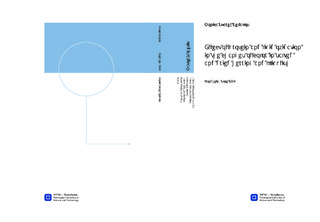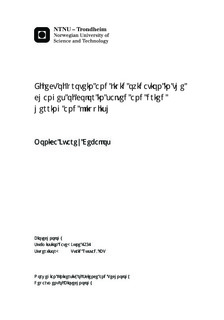| dc.contributor.advisor | Rustad, Turid | nb_NO |
| dc.contributor.author | Juarez Ceballos, Monica | nb_NO |
| dc.date.accessioned | 2014-12-19T13:15:02Z | |
| dc.date.available | 2014-12-19T13:15:02Z | |
| dc.date.created | 2012-11-08 | nb_NO |
| dc.date.issued | 2012 | nb_NO |
| dc.identifier | 565947 | nb_NO |
| dc.identifier | ntnudaim:6717 | nb_NO |
| dc.identifier.uri | http://hdl.handle.net/11250/245868 | |
| dc.description.abstract | Color in fish products is sometimes used as quality index. Behind the development of color in fish product are a series of chemical reactions as protein and lipid oxidation as well as Maillard reactions. Transition metals and the composition of the muscle influences can triggered such reactions. The complexity of such reactions is higher when the proteins suffer denaturation due to salting processes. Salt also influences in the degree of oxidation.In this project, changes in color of two fish products were studied: salted and smoked herring fillets and klippfish. Protein oxidation was measured as carbonyl groups. Lipid oxidation was measured as peroxide value (PV) in salted and dried herring and thiobarbituric acid quantification (TBARS) in fully salted cod. In order to determine discoloration, browning intensity was measured.In the salted and smoked herring fillets the process to obtain the desired color is very expensive. To achieve a golden brown color is necessary to smoke the fillets for a long period. It was added transition metals to the salting brine resulting in higher oxidation. The use of glucose and xylose as alternative to sucrose was investigated resulting in even higher browning intensity (xylose>glucose>sucrose). This study shows that the use of xylose or glucose as an alternative to the sucrose or the addition of prooxidants as transition metals can optimize the process reducing the time the fillets need to be at the smoking process.In the klippfish part, fully salted cod cubes were prepared to simulate the salted process. Cod cubes were divided in dark and white muscle. Copper and heme were added to the salting brine. The cod cubes were brined and then kench cured. Protein and lipid oxidation were measured after each salting process. The results show that copper and heme work as prooxidant and may be the responsible of discoloration of klippfish. Copper can be found in salt impurities, thus its importance. The other important factor in the klippfish process is removing all residues of blood or viscera. | nb_NO |
| dc.language | eng | nb_NO |
| dc.publisher | Institutt for bioteknologi | nb_NO |
| dc.subject | ntnudaim:6717 | no_NO |
| dc.subject | MBIOT Bioteknologi | no_NO |
| dc.title | Effect of protein and lipid oxidation in the changes of color in salted and dried herring and klippfish | nb_NO |
| dc.type | Master thesis | nb_NO |
| dc.source.pagenumber | 82 | nb_NO |
| dc.contributor.department | Norges teknisk-naturvitenskapelige universitet, Fakultet for naturvitenskap og teknologi, Institutt for bioteknologi | nb_NO |

